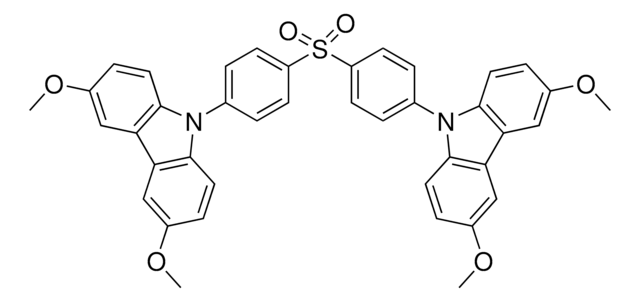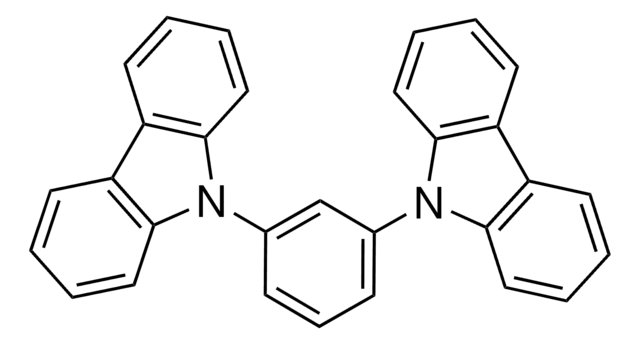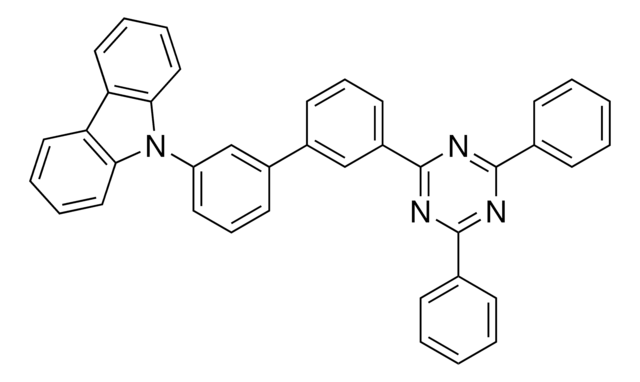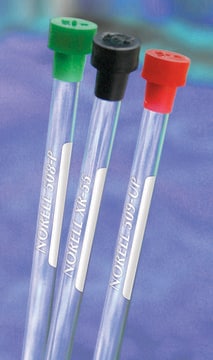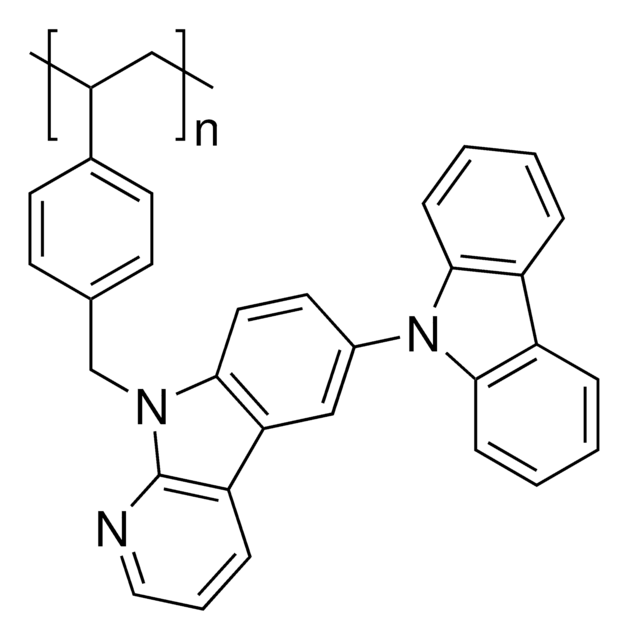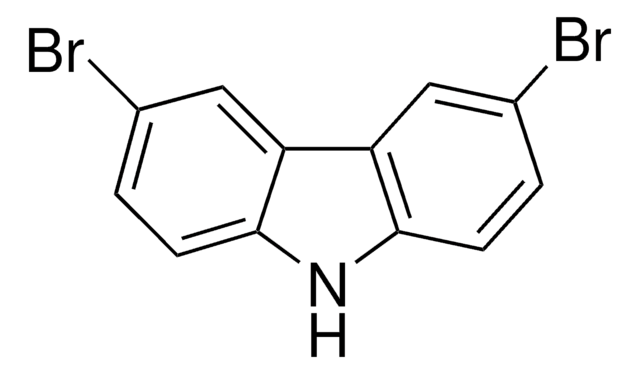932051
2,6-Bis(3-(9H-carbazol-9-yl)phenyl)pyridine
≥99% (HPLC)
Sinónimos:
26DCzPPy
About This Item
Productos recomendados
grado
sublimed grade
Nivel de calidad
descripción
μh ≈ 1.0 x 10-5 cm2 V−1 s−1
μe ≈ 1.0 x 10-5 cm2 V−1 s−1
Ensayo
≥99% (HPLC)
pérdida
0.5% TGA, > 370 °C (weight loss)
solubilidad
chloroform: soluble
dichloromethane: soluble
toluene: soluble
fluorescencia
λem 410 nm±10 nm in dichloromethane
Energía orbital
HOMO 6.05 eV
LUMO 2.56 eV
λ
in dichloromethane
Absorción UV
λ: 239 nm±5 nm Amax
λ: 292 nm±5 nm Amax
cadena SMILES
C1(C2=CC=CC(N3C(C=CC=C4)=C4C5=C3C=CC=C5)=C2)=NC(C6=CC(N7C(C=CC=C8)=C8C9=C7C=CC=C9)=CC=C6)=CC=C1
InChI
1S/C41H27N3/c1-5-22-38-32(16-1)33-17-2-6-23-39(33)43(38)30-14-9-12-28(26-30)36-20-11-21-37(42-36)29-13-10-15-31(27-29)44-40-24-7-3-18-34(40)35-19-4-8-25-41(35)44/h1-27H
Clave InChI
UFWDOFZYKRDHPB-UHFFFAOYSA-N
¿Está buscando productos similares? Visita Guía de comparación de productos
Categorías relacionadas
Aplicación
Código de clase de almacenamiento
11 - Combustible Solids
Clase de riesgo para el agua (WGK)
WGK 3
Punto de inflamabilidad (°F)
Not applicable
Punto de inflamabilidad (°C)
Not applicable
Elija entre una de las versiones más recientes:
Certificados de análisis (COA)
It looks like we've run into a problem, but you can still download Certificates of Analysis from our Documentos section.
Si necesita más asistencia, póngase en contacto con Atención al cliente
¿Ya tiene este producto?
Encuentre la documentación para los productos que ha comprado recientemente en la Biblioteca de documentos.
Nuestro equipo de científicos tiene experiencia en todas las áreas de investigación: Ciencias de la vida, Ciencia de los materiales, Síntesis química, Cromatografía, Analítica y muchas otras.
Póngase en contacto con el Servicio técnico
